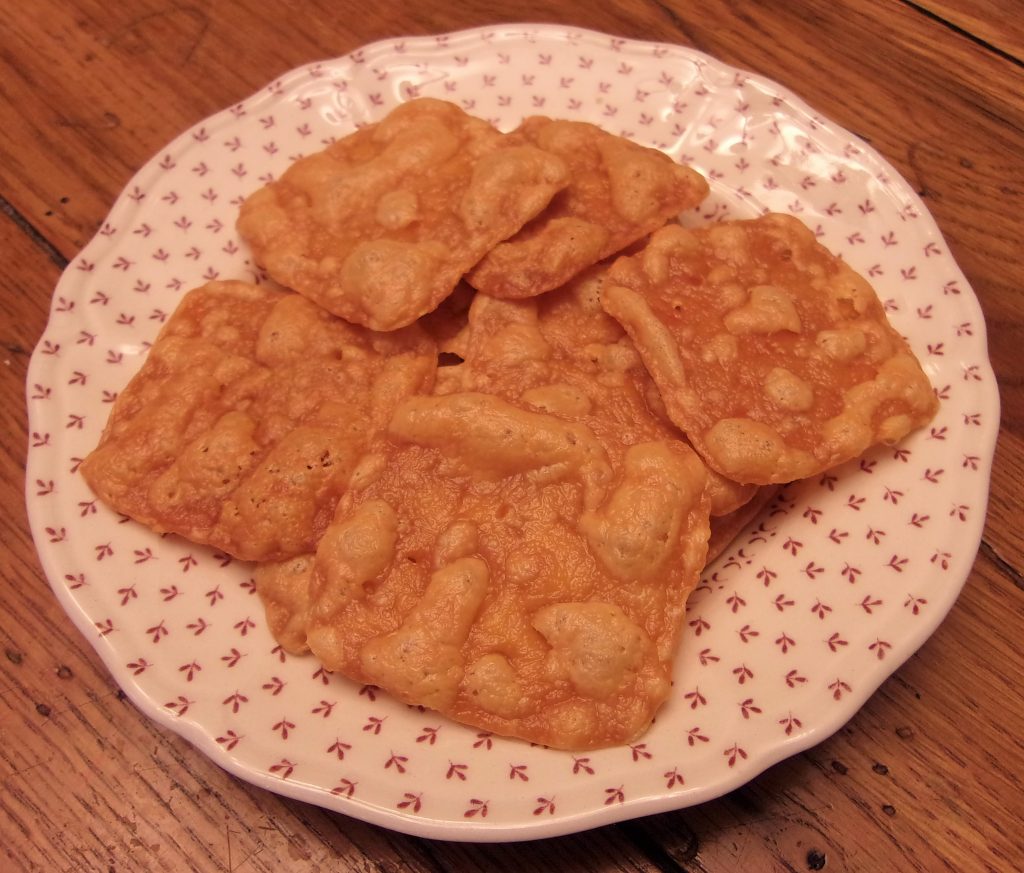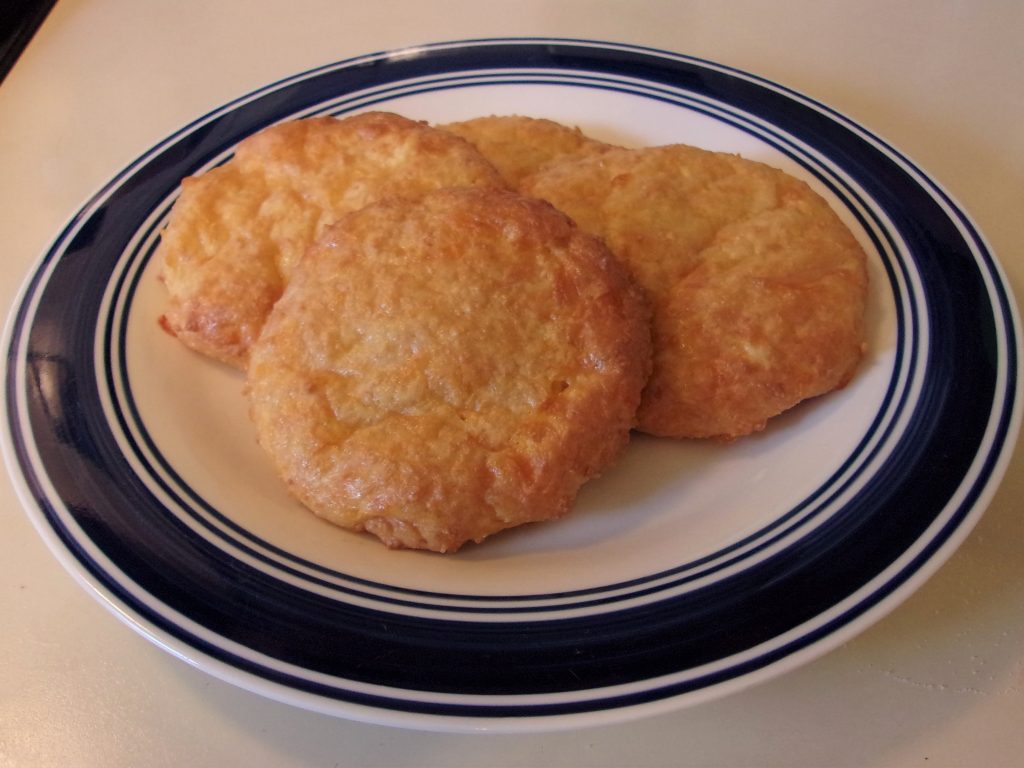
Steak is an excellent keto meal. And you don’t need a grill to make the perfect steak. I’ll show you how to do with with your oven and frying pan.
This method works perfectly with any steak. I’m using a NY Strip, it works equally well with a Ribeye or other cut. You’ll need some butter to sear the steak, and I’m going to use the pan drippings to sauté some mushrooms (completely optional, of course)
We’ll start by cooking the steak in a slow oven, I use 200F (100C). This allows the steak to evenly reach the desired temperature, so most of it is perfect medium rare, with little gray area. A oven safe temperature probe is highly recommended, to make sure you don’t shoot past the goal temperature of 100F (38C).

Place the streak on a roasting rack and insert the temperature probe, getting the tip into roughly the center of the steak. Put it in your oven and set the alert temperature to 100F. I find this takes about 45 minutes, but it will vary with the size/shape of your steak, how warm it was when it came out of the fridge, as well as how hot your oven actually is (many ovens are way off temperature).
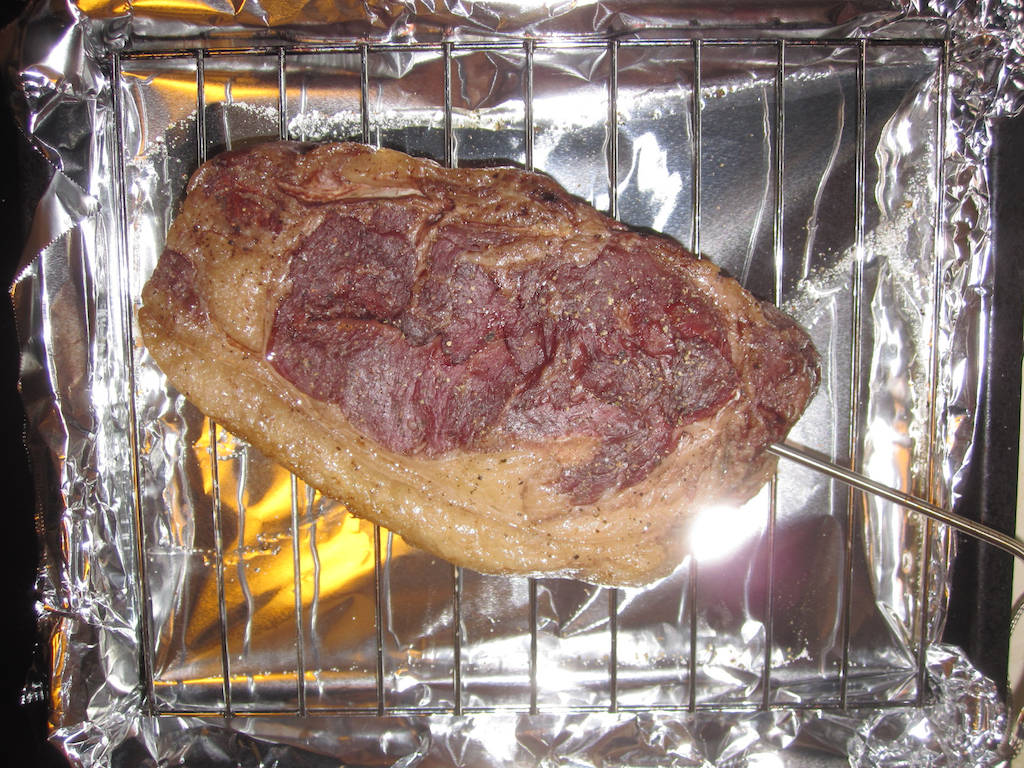
The steak has reached 100F, so we’ll take it out of the oven and move on to the next step, searing it. I like to turn off the oven and keep the door open for a few minutes at this point, so it is warm enough to keep the steak warm after searing, but not hot enough to continue cooking it.
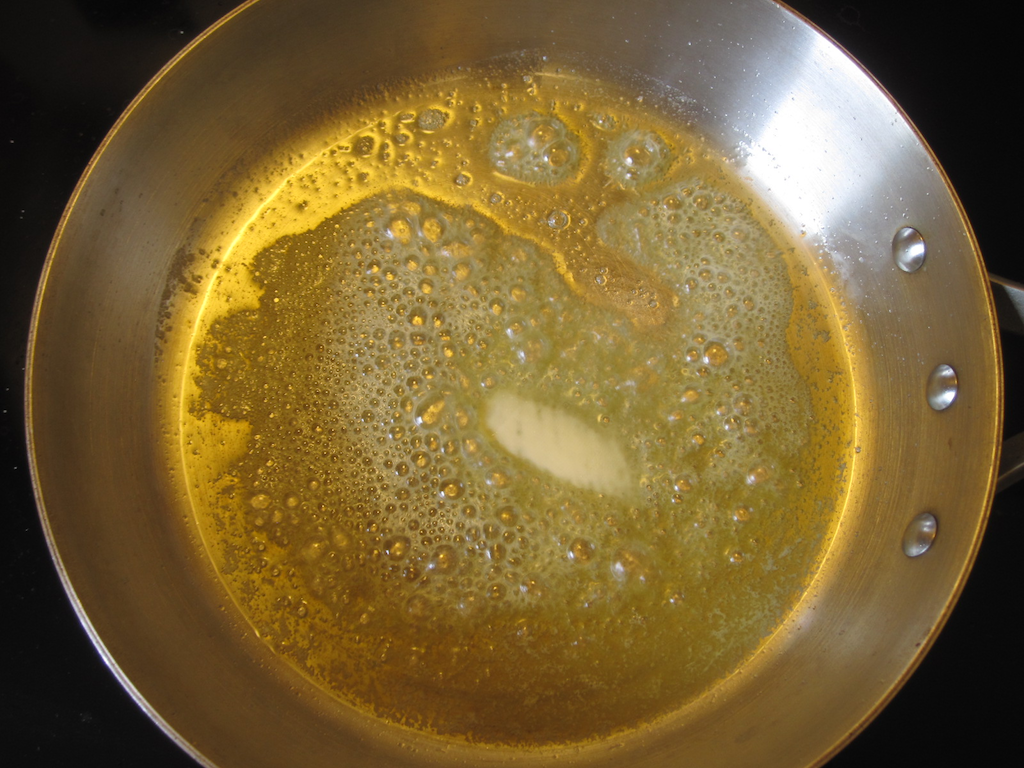
Melt 2 tablespoons of butter (I love KerryGold brand) on medium high heat in a stainless steel frying pan. Non stick pans are not recommended, as you won’t get nice sear. You want the pan to be hot enough to get nice browning, but not burnt.
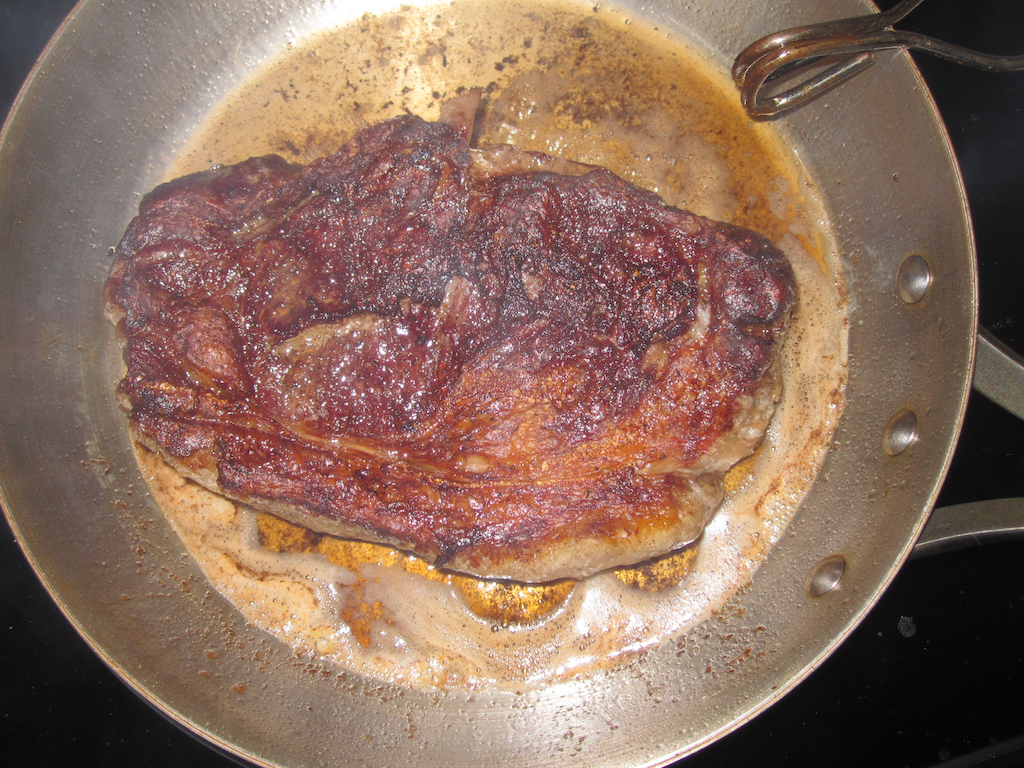
Sear on one side until golden brown and delicious (3 to 5 minutes), then flip and do the other side. When done, remove and put in your slightly warm oven to keep warm, while we make some sautéed mushrooms.
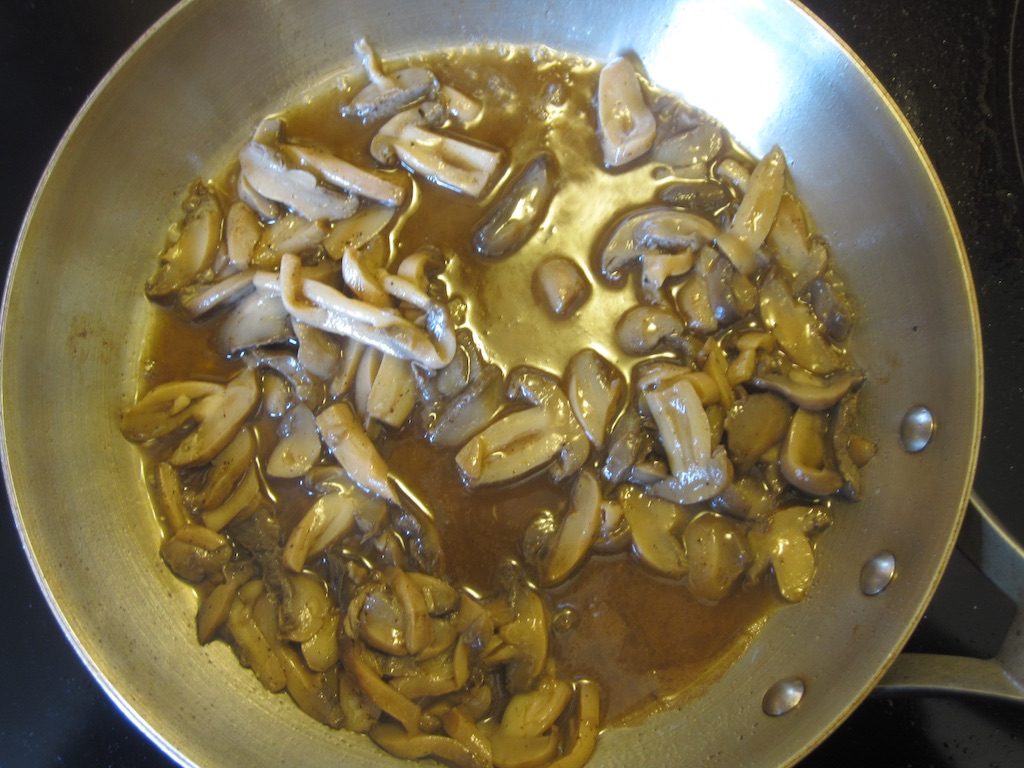
To keep things easy, I’m using canned mushrooms. Pour some of the liquid from the mushrooms in the pan to deglaze it, then add the mushrooms. Maybe some garlic after the liquid has reduced. There should be plenty of fat left in the pan from the butter and steak, but you could add more if needed. Stir occasionally for 5 to 10 minutes.

Enjoy!
